Category: Essays & Reviews
-

Satantango (1994)
Like the coal buckets in Damnation, the opening shot of cows being loosed into the fields in Satantango is as beautifully strange and breath-taking as any image I saw all year. Following it with a hundred more long takes pushes, in interesting ways, the limits of the affect.
-

The Black Dahlia (2006)
I’m nowhere near deciding yet whether or not The Black Dahlia is good, but it’s certainly among the strangest and most fascinating Hollywood films I’ve seen in quite some time.
-
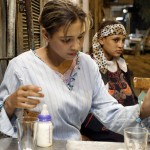
History and Politics
These Girls is a difficult film to watch. Rached avoids over-sentimentalizing her subject, and, frankly, the girls have been hardened to the point that, at times, I found it difficult to muster the appropriate sympathy for them. (I say that with embarrassment.)
-

Three for Three
Perhaps it’s simply the inevitable result of paring down my schedule from 44 films in 2005 (only 35 of which I actually saw) to “only” 33 this year, but my sense while researching and planning over the past weeks was that TIFF’s lineup is stronger, top to bottom, this time around than in previous years.
-
Collins and Jost
What most interests me — and what I lack a vocabulary to properly describe — is the direct connection between the form and political content in both of these films. That brief frisson that occurs when the pose drops — when a person who lives in an image-marketed and -mediated culture suddenly finds herself set adrift in the semiological flux — that moment, I think, is an instance of political resistance.
-

Birth (2004)
Anna so quickly and so easily falls in love with the young Sean not because he’s a manifestation of her dead husband but because he so effortlessly performs a role that is wholly the work of Anna’s imagination. She has conjured an idealized version of Sean through the magical incantation of her love letters.
-

Abel Ferrara’s Battle with the Irrational
To watch the body of Abel Ferrara’s films, as I’ve tried my best to do over the last month and a half, is to see a man wrestling obsessively — sadomasochistically, even — with the Irrational. The stylized violence, the scenery-chewing performances, the gratuitous and exploitative female nudity — all are window dressing. What’s at stake here is nothing less than the very possibility of grace.
-

Code Unknown (2000)
“People’s faces are in naked repose down in the subway,” Evans tells us, but why should we believe him? I’m not sure that I do, and Haneke almost certainly doesn’t.
-
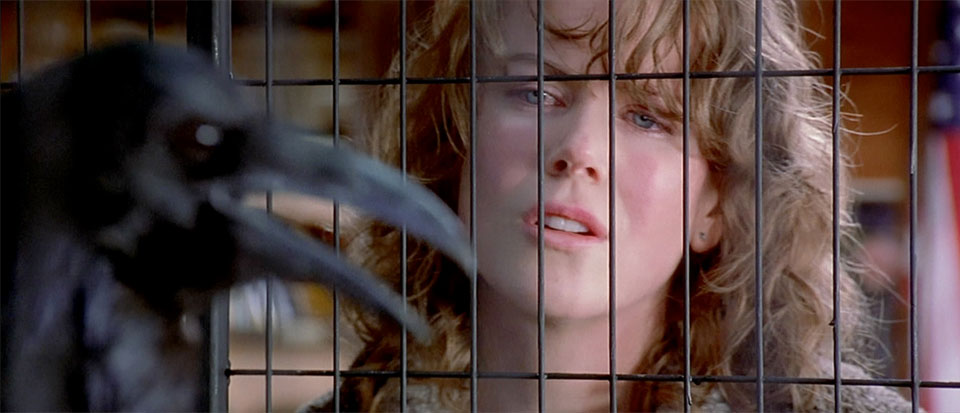
The Human Stain (2003)
But the adaptation of a written text to film also necessarily foregrounds the authority of images, imposing specificity on what an author might have chosen to describe more generally. I was surprised, for example, to find myself suddenly moved by an image of the small boxes in which Faunia stores the ashes of her dead children. In the novel, surprisingly little emphasis is placed on the ashes; Roth does not make of them an excuse for one of his patented ten-page diversions.
-

Diving Deep into Caveh Zahedi’s In the Bathtub of the World
This essay was presented at the 2005 conference of the South Atlantic Modern Language Association.
-

Z Channel: A Magnificent Obsession (2004)
How would the tone of the film change, for example, had she included reports from the crime scene or interviews with his wife’s surviving family? Instead, we are offered only one quick glance at a photo of the woman who later would be brutally murdered, and a few fond remembrances of her from Harvey’s friends.
-
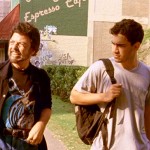
Slacker (1991)
Linklater, perhaps more than any other contemporary filmmaker, is alive to the potential and the basic human value of the men and women who walk in and out of his films. And he seems to have a particular fondness for the folks who live on the margins, whether by choice or necessity.
-

Chocolat (1988)
Reviewers who have deemed “unnecessary” the framing device involving the adult France have completely misread Chocolat, I think. While there is much to recommend in the film—Agnes Godard’s cinematography, the many fine performances, and Denis’s typically seductive pacing, to name just a few—Denis’s handling of the film’s subjective perspective is what differentiates this film from other earnest and well-intentioned examinations of racism and/or colonialism.
-
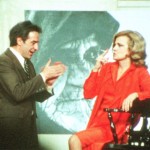
Fallen Creatures in a Fallen World: The Films of John Cassavetes
This essay was originally published at Sojourners.
-

The Skywalk is Gone (2002)
The Skywalk is Gone is like a little gift to all of us who have followed Tsai’s career, and I’m thrilled that Wellspring included it on the DVD release of Goodbye, Dragon Inn.
-

Tarnation (2004)
Look closely at the image I’ve posted above. Mother and son. Finally at rest. Finally at peace. It’s one of Tarnation’s closing images and also one of its most poignant. A glimmer of hope. Love among the ruins. But here’s the thing: the scene is staged.
-

Friday Night (2002)
Joanna tells me — and she’s told me this many times over the years — that she fell in love the first time we held hands. I couldn’t imagine what she meant. Men, in my experience at least, seldom consider hands. Or, we consider them only when they’re noticeable — scarred, chewed, ornamented by loudly painted nails. Even then, though, we offer only a passing glance and a quick, rarely-conscious judgment. To really consider a hand demands a certain intimacy, I think. We’re allowed to stare at faces, encouraged even to maintain eye contact during public conversations, but to really look at a hand (or the place where a neck meets a shoulder or the back of a knee) is taboo outside of a bedroom (metaphorically speaking).
-

9 Songs (2004)
“It’s claustrophobia and agoraphobia in the same place, like two people in a bed.” Matt (Kieran O’Brien) delivers this line in voice-over after the fact — after his ex-girlfriend Lisa (Margot Stilley) has returned home to America and after he has returned to Antarctica, where he is researching glaciers.
-
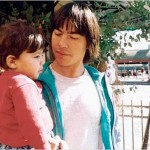
Little Sky (2004)
Like a Frank Norris or Theodore Dreiser novel, Little Sky drives steadily toward its inevitable, and inevitably dark, conclusion.
-

Moolaade (2004)
Sembene introduced his film by reminding his mostly white, mostly Western audience that Africa — the entire continent, its nations, its governments, and its people — is experiencing a period of unprecedented transition. There was no moralizing or condemnation in his tone, not even a suggestion of the catastrophic crises and genocides that fill the back pages of our newspapers. Africa is in transition, he told us, and this film is about that transition.
-

Trilogy: The Weeping Meadow (2004)
Angelopoulos introduced his latest with very few words. It is to be the first of three films about the life of a Greek woman who manages to survive the 20th century, and its concern is “the human condition.”
-

Schizo (2004)
Omarova’s debut takes its title from a nickname given to the main character. Schizo (Olzhas Nusuppaev) is 15 years old and a bit slow; his classmates abuse him and exploit his gullibility. He is soon hired by his mother’s thug boyfriend (Eduard Tabyschev) to recruit unemployed laborers for illegal boxing matches.
-

Tell Them Who You Are (2004)
Tell Them Who You Are has the best opening scene of any film I saw at this year’s festival. Haskell Wexler is standing in his camera equipment room, taking stock of his inventory for an upcoming sale.
-
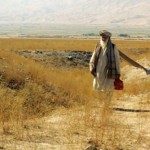
Earth and Ashes (2004)
Days after his village is destroyed in a bombing raid, Dastaguir (Abdul Ghani) and his five-year-old grandson Yacine (Jawan Mard Homayoun) jump from the back of a pickup truck and take their seats at a desert crossroads, where they wait and wait for a ride to a nearby mine.
-

10e Chambre, instants d’audiences (2004)
During the screening of 10e Chambre, instants d’audiences, I was quite disappointed by the film, but even then I knew that my disappointment was with the audience rather than with the film itself.
-

3-Iron (2004)
Jae Hee plays Tae-suk, a young man who breaks into homes, prepares meals, bathes and naps, then repays the homeowner’s generosity by performing small acts of kindness: washing clothes, repairing broken electronics, and the like.
-
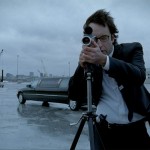
Childstar (2004)
I decided to see Childstar mostly for the opportunity to hear McKellar introduce it — I’ve been a big fan since first seeing him in Atom Egoyan’s Exotica — and his introduction set up the best laugh of the morning.
-

My Summer of Love
My Summer of Love received a lot of “buzz,” as they say, in Toronto, and I would guess that most of it was generated by Press’s performance, which is a lot of fun to watch.
-

Nobody Knows (2004)
After Life is one of my favorite films of the past five years, so for that reason alone, I was very much looking forward to Kore-eda’s latest, Nobody Knows, the story of four young siblings whose mother abandons them to find work in another city.
-

Motion Pictures During World War I and II
Note: Writing an entry for an encyclopedia intended for high school and college libraries, as it turns out, is a lot like writing an undergraduate research paper: the concerns seem to be quantity rather than quality, breadth rather than depth. I found the process more than a bit maddening.